In just about every movie set in New York City in the 1970s and 80s, there’s an establishing shot with a graffiti-covered subway.
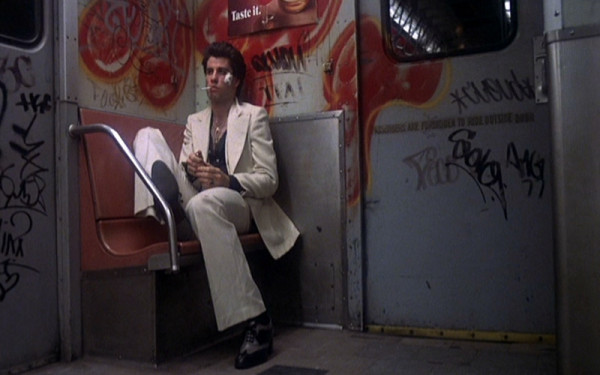
That graffiti was like illegible technicolor hieroglyphics — a language that even most New Yorkers couldn’t read. It gave you a sense that the subways controlled by wild gangs of teenagers. And they kind of were.
For city officials, train graffiti was a sign that they had lost control. So, starting in the early 70s, mayors of New York vowed to eradicate graffiti. First, Mayor John Lindsey formed the first anti-graffiti task force. He also re-classified graffiti from a nuisance, like littering or loitering, into a crime.
Still, subway graffiti persisted. For two decades, the MTA failed miserably in its attempts to fix the problem, sometimes, laughably. Like the time they decided to repaint 7,000 subway cars white. They called it “The Great White Fleet.” Of course, this only provided a fresh white canvas for the graffiti writers and then before you knew it, the fleet was covered in spray paint again.
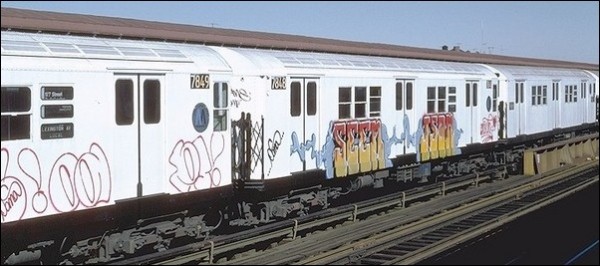
Then there was Mayor Ed Koch’s “Berlin Wall” method. Koch surrounded the train yards with two fences topped with barbed wire and guarded by German Shepherds. This worked until graffiti writers realized they could distract the dogs with food and cut through the fences.
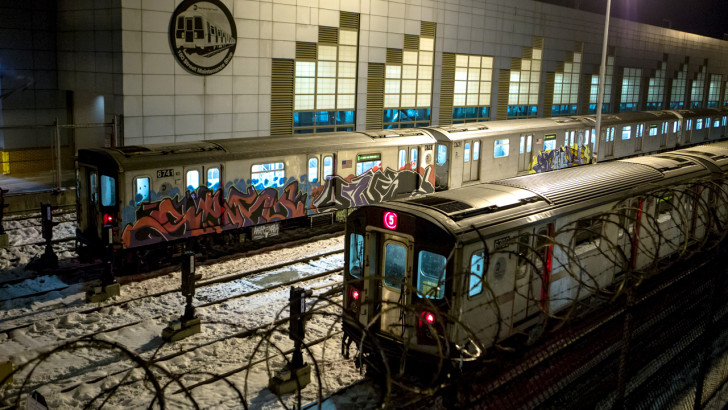
In 1984 David Gunn became President of the New York City Transit Authority.

David Gunn had already cleaned up subways in Boston, Philadelphia, DC, Toronto, and also headed up Amtrak for a while, too. Yet even Gunn was intimidated by the state of New York’s subways; he called the job a “suicide mission.”
For decades, authorities treated subway graffiti like it was a sanitation issue. Gunn believed that graffiti was a symptom of larger systemic problems. After all, trains were derailing nearly every two weeks. In 1981 there were 1,800 subway car fires—that’s nearly five a day, every day of the year!
When Gunn launched his “Clean Trains” program, it was not only about cleaning up the trains aesthetically but making them function well, too. Clean trains, Gunn believed, would be a symbol of a rehabilitated transit system.
Systemically, train line by train line, Gunn took the subways off the map for graffiti writers. While they were fixing it, they didn’t allow any graffiti on it. If graffiti artists “bombed” a train car, the MTA pulled it from the system. Even during rush hour.
May 12, 1989 was declared the official day of the city’s victory over train graffiti.
But of course, train graffiti has never stopped.
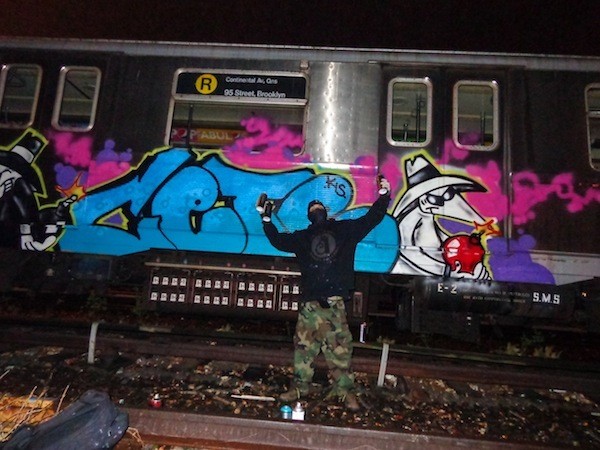
There is still subway graffiti—it just never leaves the train yards. Artists—many of them from abroad—paint subway cars knowing full well that they will get cleaned before they’re ever seen by the public.
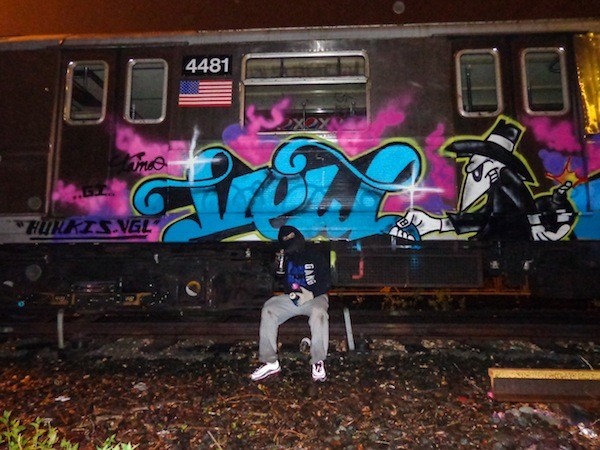
The only place most people can see NYC subway graffiti is on social media.
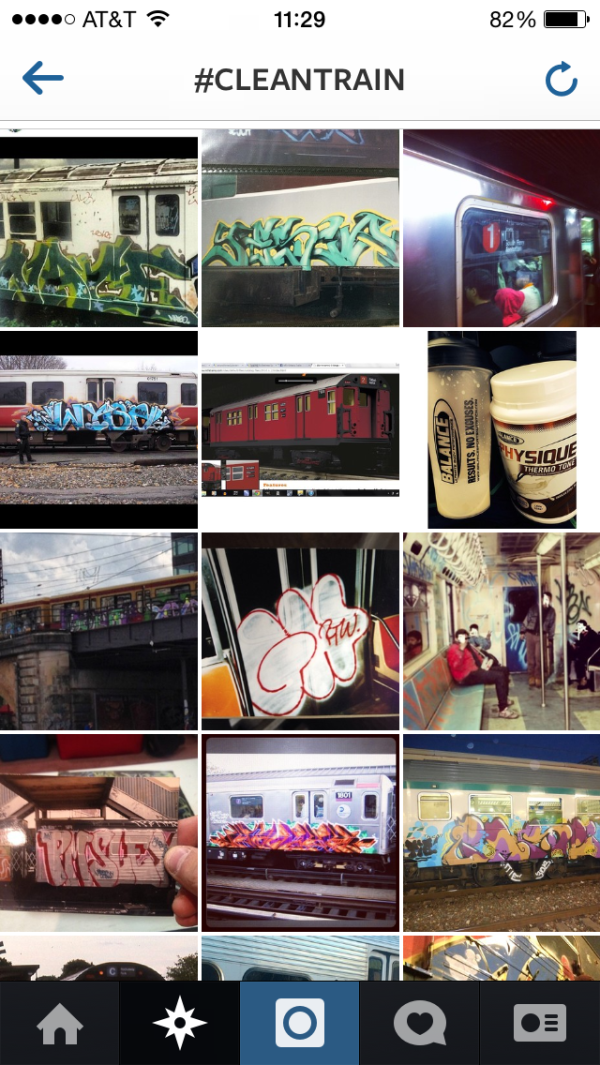
Given that graffiti artists won’t have their work seen as widely as they once did by painting the trains—and with a substantial risk of jail time and severe fines—subway graffiti in New York may be dying out.
And if it did, how would we even know?
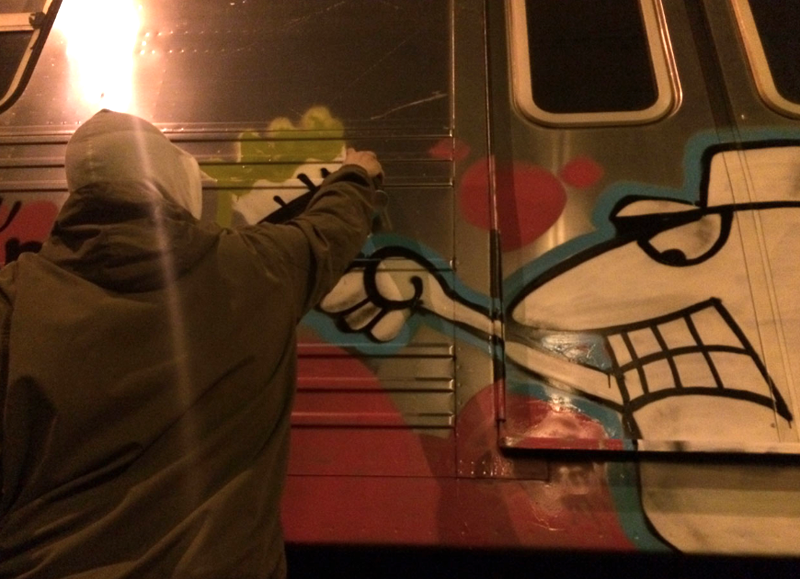
Reporter Ann Heppermann spoke with artist Caleb Neelon; former NYC Transit Authority director David L. Gunn; Vincent DeMarino, Vice President of Security the MTA and New York City Transit; and graffiti artist CETE (which stands for “Clean Trains”).
Recently, CETE was arrested by the Vandal Squad (the NYPD anti-graffiti unit). CETE was charged with more than 180 counts of misdemeanor counts including “Possession of a Graffiti Instrument,” plus a few felony charges. CETE took a plea deal and agreed to pay nearly $19,000 in restitution fees. He is now on probation.
Production help provided in this episode by Robie Flores.
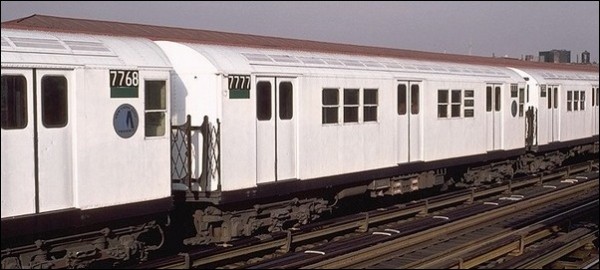



Comments (29)
Share
I love pieces, not a fan of tags and weak throw ups that any toy with a marker or a tip less can puts up. I’m more offended by the banality of the ads they bombard us with on transit systems.
I lived in Rome for a bit and they still have full trains covered like it’s BK in 85. Loved it. Banksy is great but individual expression is greater.
If you were around in ’85 you wouldn’t be so keen on going back to how New York was then.
so bad you cant see
The express busway in Pittsburgh is fantastic — I love the graffiti there. ONOROK and his brethren are amazing artists. I wish the city would hire them to do murals.
http://www.graffiti.org/sins/directory/artists/onorok/concrete/onowall02.jpg
Visit Melbourne, Australia! So much amazing street art there, and they’re all allowed, adding vibrant character to the city. The most famous of these is Hosier Lane, where even (for better or for worse) people get their wedding photos taken! Also if you do some wandering around the Inner West of Sydney, you can find some as well. I realised that one of the reasons I love them is because I grew up watching Wild Style, Beat Street, et al. Interestingly, I’ve never seen any train/bus/tram in Melbourne/Sydney with graffiti on it!
Good that this article cites David Gunn’s leadership in fighting and ultimately winning the “war” on NYC subway car graffiti. As a point of accuracy on Mr. Gunn’s other accomplishments, he headed up Amtrak well after his time at NYCTA.
I thought you gave that graffiti painter way too much credit for art and not enough blame for vandalism. He caused many dollars worth of damage to that subway car!
you’re lame and boring
As a kid in the mid 70’s through mid 80’s my dad would take me on the subway to Yankee Stadium in the Bronx. I thought it was a cool adventure and never thought of it as the dangerous place described in the podcast.
A few Yankee games and you think you’re a subway expert? I road the subways then to school and then work and they were not as safe as they are now.
Safety in the trains has little to do with paint on the outside. The kids bombing in the yards weren’t the ones pulling knives in the L. Very little of it had to do with gangs either. Crews of writers aren’t the same thing as stick up crews.
Really enjoyed this podcast. Very interesting.
I loved that you used “Theme De Yoyo.” One of my all time favorite recordings from one of my favorite group of musicians. Fit the story perfectly.
I don’t want to come across as overly negative, so know that I love 99 percent invisible, it is one of my favourite podcasts, and I contributed towards the recent kickstarter.
That said, I did not like this episode. I felt it glorified vandalism of public property and brushed off the negative consequences of graffiti on society; the logistical nightmare of constantly cleaning these trains, costing many millions of (taxpayers) dollars that could otherwise go to actually improving services etc. The people who are committing crime and destroying public property for nothing more than the thrill of it deserve no praise for their art, quite the opposite. There are many other places to express yourself creatively without causing harm to others. People who both follow the law and create cool art would make a more agreeable podcast topic, at least for me.
Thanks
As much as i see your point, i highly doubt anyone is going to hear this and decide to turn to a life of graffiti. If anything an episode like this revels in an almost lost art, as evidenced by roman expressing that the rates of vandalism have gone down exponentially since their heyday. Not that graffiti is dying per say but as an art form it is incredibly unique and deserves historical preservation and the subway tagging evidenced in this episode represents the starting point of this legacy.
There’s a 99PI ep about Lawn Police and the idea that a lawn that didn’t conform to the standard is seen as degrading our societal norms.
I feel like they could have left the paint on the outside and just focused on improving the service. The paint wasn’t the cause of the crime or even a symptom (plenty of tags in affluent places), but kids with spray cans are an easy target.
If you’re rich you’re allowed to put your name all over everything and most don’t see it for the mental pollution that it is. Some kids express themselves in an unsanctioned way (surprise) and they have to be put in their place (and possibly jail).
I’m not saying vandalism isn’t a problem, and I don’t condone it all, but let’s keep some perspective.
This episode reminded me of Brian Woods comic book series DMZ set in NYC where he wrote about how all the cars in the NYC subway are numbered and have a specific location that they are stored in the yard. He spun a tale about an artist that had spray painted the roofs of all the NYC trains that would only appear as one giant mosaic when all the trains were returned to the yard. A beautiful and poetic idea.
I giggle my butt off when you said “all you boppers” since I thought you’d leave the Warriors reference at just that, but then you went full on with it. So awesome. ‘Everyone’s favorite…the baseball Furies” so true!
I listened to your podcast for the first time today.
I was surprised to hear a show devoid of any critical thought or analysis surrounding NYC’s graffiti eradication program. No issues of race, class or gentrification were explored or even mentioned. By and large, we heard from smug white people with zero connection to the communities that many graffiti artists came out of in the ’70s and ’80s. David Gunn, the brains behind graffiti elimination in the subways was deemed the “great white knight” of the NYCTA. How appropriate! I also loved your show’s tacit endorsement of his term “little bastards” when speaking of the young graffiti artists coming out of poor NY communities (often POC), and the (wrong) characterization of writers as gang members.
At the end of the program we finally heard a little about the experience of one NYC-based artist: CT. The narrator was tickled to announce CT’s recent arrest on 180+ misdemeanor counts, as well as felony charges. How amusing to hear about–hurrah for the prison state!
Thanks for letting me know how tremendously out of touch you are. I’ll be sure to spread the word to my friends.
Seriously? You must have your ear tuned to listen to this a certain way, because I would say most people would say this was just a telling of an almost lost art.. Actually, a few above even saying glorifying it.
You fail to mention how they also referred to Gunn as the Darth Vader, taking the fun away. Also, what makes you think the reported was “tickled” to hear of the penalties laid out against CT? You can now read his mind?
You can tell everyone you know, but that’s not going to effect 99% invisible. Anyone that listens knows the last thing it is, is “out of touch.”
No subways in South Louisiana to tag, but here and there some creative work is seen on railroad cars. Try Kinder, LA, along US 165. CETE i’d let slide, but some stoner with a can of Krylon, run him in.
You road the subway to school? I guess english wasnt acourse there?
DAVID GUN IS A SPANISH INQUISITOR, A HITLER, WARDEN, HE HATES ART HE CRIMINALIZED BRILLIANT ARTISTS. DESTROYED PUBLIC ART.
Definitely agree with Matt P. David Gunn’s vehemence for those “little bastards” cannot be extricated from his position as a white man, and the targets of his remarks– mostly POC/black graffiti artists. Like this ethnographic study http://journals.cambridge.org/action/displayAbstract?fromPage=online&aid=9059579&fileId=S1321816613000226, graffiti art can (and should be) understood as an art emanating from the experiences artist. If we assume that such artists are mainly POC and black, that art can be a critical juncture against lived oppression, and a domain for release,freedom, and self-expression. Stamping it out of the city, then, is codified suppression of the artistic expression of POC/black artists.
Equally, I don’t think it was appropriate to air the charges against CT. What purpose does it serve to the listener? Perhaps 99% invisible doesn’t want to be seen as encouraging “vandalism”– that is understood as vandalism only after the declaration of its illegal nature at the beginning of clean up efforts–and I sympathize with the public funds, and numerous workers, who have to constantly clean trains. Still, the tone of the ending felt smug and didn’t add any value to the piece, C.T.’s love of trains, or his art.
But this is all post facto–did city residents ever find graffiti an enormous nuisance that required a law against it? What if the city commissioned artists to paint murals on trains? As Gunn mentioned, the penalty of graffiti necessary to revamp the train system, but what if the city had set quotas of public art on the trains? Who controls the aesthetic taste of the city?
And to all the posters above who disagree with this (and I do mean this sincerely), how can you not feel the pain from POC/black artists who lost such a vital part of their lived experience, visual space, and aesthetic medium?
It’s amazing how a person can be so wrong that even six years later it rings down through the ages. Congratulations.
But this is all post facto–did city residents ever find graffiti an enormous nuisance that required a law against it?
Yes, we fucking did
This is one episode where you went with the one percent visible. Poor journalism and more fodder for the looming race war.
I wonder if this was concurrent with the “broken windows” police policy.
Anyone knows if D. Gunn is still around and available?? We should hire him in Barcelona asap. The situation here is out of control, there are genuine criminal gangs of graffiti vandals who hijack running trains to cover them in spray, attacking anyone (railway personnel, security guards, and recently even passengers and police officers) who stand in their way; they’ve been spotted carrying metal bars to use as weapons. Their actions cost a minimum estimate of €15 mill. of the public budget every year in reparations and service affectations, and yet those bastards don’t contribute a penny. Impunity is absolute. Not to mention the health and environmental impact of the highly-toxic products needed to remove the paint, and the negative effect on train surfaces that now need more maintenance. Trains are now systematically running in embarrassing conditions. I know all this because I’m a train driver myself. So please stop glorifying these sc*mbags and their disgusting “art” practices.